Types of Necklace Chains
How to choose between the different chain styles
The chain is one of the most fundamental pieces of jewelry that exists. It can simply be the thing you use to wear your pendants, or it can make a statement all by itself. You can wear one everyday and not think twice about it, or it can be your most treasured piece of jewelry. But, what kind of chain is best for you?
In this article we’ll introduce you to the staggering variety of necklace (and bracelet) chains that are available right now in the jewelry world. Each one has its own unique style, strengths, and weaknesses. As always, if you would like personalized recommendations on a chain, feel free to contact us anytime. One of our experienced jewelry experts would love to talk with you.
Cable Chain
If I asked you to close your eyes and imagine a chain, you would probably conjure up some kind of cable chain. They are one of the most common and universal styles of chains. Cable chains are extremely simple in design being comprised of round or oval links connected together one link at a time end over end. This simplicity gives them their timeless look, but it also gives them great strength and makes them one of the easiest styles to repair. The links in quality cable chains are typically soldered closed. Avoid cable chains with open links as they can break easily.
Depending on the thickness, cable chains can easily be worn on their own or layered with other chains. They are also a great option for pendants because they are flexible and don’t often snag the pendant bail. They are also relatively strong to support the weight of a pendant during daily wear and tear. Larger link cable chains make a good base for charm bracelets.
PROS
Wearability – The simple design of cable chains makes them very flexible and nearly impossible to kink.
Serviceability – They are probably the easiest chain style to maintain and repair. Keep in mind that this only applies to solid link cable chains. Hollow cable chains, like any hollow jewelry, are difficult to work on.
CONS
Common – It’s one of the most popular chain styles that exists. A cable chain won’t make you stand out from the crowd.
Rolo Chain (Belcher)
The rolo chain is essentially the same as the cable chain except that it features wide, rounded chain links. This gives the chain a heavier appearance and can increase its longevity and strength to some extent. It shares many of the same pros and cons as the standard cable chain.
PROS
Strength – The wider links give added strength to the basic cable design
CONS
Cost – The extra metal required to make rolo links typically makes them more expensive than a comparable cable chain of the same width.
Paperclip Chain
The paperclip chain is another variant of the traditional cable chain. This style has become quite popular in recent years, and you have probably seen them in your social media feed and in your friend group. The distinguishing feature of the paperclip chain is its long oval link which resembles the portions of its namesake.
One advantage of the paperclip chain is its efficient use of metal. So, you can have a big chain look without a big chain price. This is a very nice feature to have when gold prices are high. The only downside is that this style isn’t quite as strong as a traditional cable chain of the same size would be.
PROS
Cost – As mentioned above, the copious amount of open space makes this chain much more affordable than other styles of the same thickness.
Flexibility – Like other cable chain variants, the paperclip chain is very flexible and easy to wear.
CONS
Strength – The long, thin links are prone to bending and can break more easily than the tighter links of a traditional cable chain.
Box Chain (Venetian)
The box chain also known as venetian chain has a bright, modern design. This chain is formed when flat wire is folded into a cube shape and then linked together. The flat sides and defined edges of each box link reflects light and makes this chain one of the most eye catching design. Like the cable and rolo chains, the box chain is flexible. The “sparkle” of this chain can enhance a necklace.
PROS
Modern Style – Box chains have a sleek and simple look which pairs well with a modern look.
Flexibility – The structure of box chains makes them flexible enough to drape well and not tangle easily.
CONS
Strength – The box chain is not the strongest chain style. It can become stretched out if pulled too hard which makes it stiff and inflexible in spots.
Wearability – Box chains have an unfortunately tendency to pull hair. They can also become twisted which detracts from their clean, straight look.
Rope Chain
Few other chain styles are as famous and well known and the rope chain. These chains are comprised of many circular links that are connected in a twisted pattern. A result of this design is that, unlike a cable chain, each link is connected in multiple places. This redundancy makes the rope chain one of the most durable chain designs there is.
Each twist on these chains reflects light easily and when they are diamond cut they are extremely sparkly. Although most chain styles can come in a hollow link version, for rope chains, hollow links are almost as common as the solid link. This is possible because the basic rope chain design is so strong. Keep in mind though that, like any hollow chain, hollow rope chains are very easy to break and very difficult to repair.
From the classic and flexible design to the excellent longevity, it is easy to see why rope chains are so popular.
PROS
Durability – The redundant links in a solid rope chain means that even if one or two of the links fail, the chain can still hold together.
Flexibility – Rope chains are very flexible and easy to wear. They’re naturally twisted, so you typically don’t have to worry about straightening them out.
Classic Look – The rope chain is one of the most timeless chains styles there is.
CONS
Serviceability – It can be difficult to repair rope chains cleanly and maintain their flexibility. This problem is compounded ten fold with hollow rope chains.
Wearability – Like box chains, the rope style has the ability to pull out your hair if it catches it the wrong way.
Singapore Chain
The Singapore chain combines flat and rounded links which are interwoven and given a slow twist. This twisted design can make them resemble rope chains when viewed from a distance. The woven and filigree style of this chain will often have a light, airy feel. These chains will be often be diamond cut which gives them an even more lively and glittering appearance.
Diamond cutting on a chain means there are small notches that are cut into the links and brightly polished. These notches will catch and reflect the light adding a tremendous amount of sparkle to the chain. This sparkle does come at the cost of some strength, however, as some metal has to be removed from critical areas to create the diamond cut notches. Many styles of chain can be diamond cut including the Singapore, rope, cable, and box styles.
PROS
Sparkling Style – The light weight and sparkly style makes this a chain you can wear all by itself.
Unique – Singapore chains are less common than some of the other styles making them an original addition to your wardrobe.
CONS
Strength – This is a light weight design that can break or stretch out easily. It’s also not ideally suited for carrying heavier weight pendants.
Serviceability – If the chain does break, it can be difficult to repair without leaving a noticeable mark.
Wheat Chain (Spiga)
The wheat chain is constructed with twisted, woven, oval links that move in one direction. The interlocking twisted links look like wheat stalks giving the chain its name. This chain, although not as popular as the cable and box, is a great pendant chain. They are rounded and flexible which allows pendants to slide easily and helps prevent snags. The interlocking design makes these chains strong and durable.
PROS
Wearability – The rounded and smooth links are super flexible and easy to wear. They resist getting kinked or tangled.
Style – Wheat chains pair well with almost any pendant, and their subtle yet intricate design makes them a tasteful alterative to simpler styles.
CONS
Cost – The tightly woven links use a bit more metal then some other chain styles of comparable thickness.
Cleaning – Dirt can get inside the rounded design causing them to need a bit more frequent cleaning than other chain types.
Herringbone Chain
The classic herringbone chain is made with short links that are connected in an offset V pattern. These chains are wide and flat with a very thin profile. This flat design gives herringbone chains a much bigger look than other chain styles that use a comparable amount of material. However, due to the design of the overlapping links these chains are quite susceptible to twisting and kinking. The flat design of these chains does not lend itself well to holding pendants and they require special care when storing and wearing. These chains make a big, bold statement that, for many, is worth the extra care needed to keep them looking their best.
PROS
Bold Look – No other chain style has quite the same flashy style as the herringbone. When laying flat, the way they can catch the light is dazzling.
Cost – While they are not known for being inexpensive. If you want a similar size/look you will probably wind up paying much more for another chain style.
CONS
Durability – Herringbone chains are not very strong and they kink very easily. Great care must be taken in wear and storage to keep them from being damaged.
Serviceability – When a herringbone chain inevitably becomes kinked it is nearly impossible to flatten it out completely. You will always be able to see some mark where it was repaired.
Omega Chain
Similar to the herringbone chain the omega chain has a flat, smooth, and shiny look. Some key differences from herringbone chains are omega chains are made of small metal plates that are installed very close together over a wire mesh. The wire substructure, which is often made of a strong metal like steel, gives omega chains a lot of additional strength when compared to a herringbone chain.
These chains often have a domed, curved profile. This chain link will hold its shape which is why they are constructed to have a slight curve. Because of the tightly installed plates these chains are not very flexible and require special storage to keep them from kinking. Only certain types of slide pendants work well with omega chains.
PROS
Style – Like the herringbone, omega chains show a lot of gold and create a big, impressive look.
Strength – Among flat style chains, omegas are one of the strongest designs.
CONS
Strength – Yes, it’s a pro and a con. While omegas are strong for flat link chains, they don’t compare to the strength and flexibility of simpler designs like the rope or curb. They require special care when wearing and storing.
Serviceability – If your omega chain does get kinked, it can be very difficult to repair cleanly.
Curb Chain (Cuban Link)
The curb chain is one of the strongest chain styles. They are comprised of round links that connect one link at a time end over end and then twisted so they lay flat. The flattened links reflect light and give these chains a bold appearance. The heavier weight chains are often worn by themselves in a standalone look; however, the flexible strong links support heavy pendants with ease.
The Cuban link is a variant of the curb chain that features tighter links and a more rounded profile. This style has become extremely popular in recent years, and for good reason. It gives a big look like a herringbone or omega, but it also has the flexibility and strength that curb chains are famous for.
PROS
Strength – The curb chain design is simple and strong. In our testing, a moderately heavy curb chain took over 400 lbs. of force to break.
Flexibility – Unlike other flat chain styles, curb chains are immanently flexible and very difficult to kink.
Serviceability – If you do manage to break or damage your curb chain, its simple design makes it very easy to repair in most cases (assuming its not a hollow, that is).
CONS
Cost – The same large, heavy links that give the curb chain its strength and style also make it expensive. When gold prices are high, a heavyweight curb chain with solid links can be quite the investment.
Common – As with some of the other popular styles we’ve looked at, curb chains are everywhere.
Figaro Chain
The fiagro chain is a variation of the curb chain that features a repeating pattern of long and short links. Like the curb, these chains are flexible and strong, with a somewhat masculine feel. The classic figaro pattern consists of three to five small links followed by one elongated link, although other combinations are common as well. These chains have a long and rich history and are often worn alone or with medallions since they are quite strong. Diamond cutting is sometimes used to give these chains more sparkle.
PROS
Strength – Like other curb chains, figaros are strong and flexible. They don’t kink easily and they are easy to repair if needed.
Style – The pattern of long and short links adds visual interest to the design making the figaro chain a statement piece all by itself.
CONS
Cost – As with the standard curb chain, the heavy weight links used in a figaro chain make it quite expensive.
Serviceability – While figaro chains can usually be repaired easily, if a link is lost is can be difficult to find or create an exact replacement.
Anchor Link Chain (Mariner)
The anchor link chain or mariner chain is another classic variation on the curb chain design. This chain has flat links that are connected end over end with a vertical bar down the middle of each link. This pattern resembles the heavy chains used to moor large ships, and it gives each link an added bit of strength. Like its cousins, the figaro and curb, this chain is strong, flexible, and resists knotting. With the added vertical bar, they have a more complicated appearance which is makes them great for wearing on their own or with pendants. Their strength will support heavier pendants and medallions.
PROS
Strength – Their simple, flexible design makes these chains very strong and easy to repair.
Versatility – The unique design means that you can easily wear this chain as a statement piece by itself or pair it with a pendant.
CONS
Busy – Dainty pendants may be overpowered or lost in the design.
Cost – Their heavy weight and extra metal does typically bump up their cost over similar styles of the same thickness.
Snake Chain
Snake chains are comprised of small snug rings that form a smooth circular tube shape. These chains are more flexible than the herringbone and omega but are still stiffer than most link chains. The unique circular shape gives a nice shine and intrigue for the eye. Although snake chains are stronger than other tightly linked smooth chains, they are still delicate and don’t hold up well with heavy pendants.
PROS
Elegant Design – The smooth and flexible design of a snake chain can be almost mesmerizing. It’s simple, modern, and less common than some of the more traditional styles we’ve looked at.
Wearability – Pendants slide very easily on snake chains virtually eliminating the need to constantly center them throughout the day.
CONS
Strength – Snake chains can break, kink, or become stretched out easily. Care must be taken when wearing and storing them.
Serviceability – If a snake chain does need to be repaired, the damaged area may become stiff and remain visible even after the repair.
Snagging – Although they look like one, continuous piece, the tightly packed rings can actually catch on hair and other fibers during daily wear.
Serpentine Chain (Cobra, Boston Link, S-Link, C-Link, Flat Link)
Serpentine, Cobra, S-Link, and C-link chains are all examples of a flat link style. These chains have smooth, interlocking links that are flat on top and bottom creating a thin profile. The semiflexible design and flat reflective angles makes these chains great for layering or wearing on their own. Sharp bends and twisted can damage these chains, and they are not typically well suited for heavy pendants.
PROS
Style – These chains lay flat and catch the light in interesting ways. This gives them a unique and stylish look.
Unique – There are many different varieties of flat link chain. Find your favorite, and create your own original style.
CONS
Strength – This style of chain is not the strongest, and they can easily become kinked if bent the wrong way during wear or storage.
Serviceability – It can be difficult to repair serpentine chains cleanly while maintaining their flexibility.
Bead Chain (Ball)
The bead or ball chain is comprised of spherical orbs that are evenly spaced and connected by bars. These chains have a fun, lively appearance that can be more casual than other styles. Although not very strong, light pendants can be worn on them, or they can be easily layered with other chains. This link is semiflexible with most chains, and the beads are free to move slightly in and out along the bars. This chain may seem familiar, because this same design is often used in key chains.
PROS
Fun and Different – This is a laid back chain style that can be fun to wear while creating an original overall look.
Wearability – The semiflexible design allows to the chain to drape nicely without the worry of it becoming twisted.
CONS
Strength – The bead chain is one of the weaker chain styles due to its basic design. It can be easy to break.
Serviceability – The combination of hollow beads and the inset connecting bars make this chain difficult to repair if it does break or get dented.
Byzantine Chain (Turkish)
This chain has a long rich, history and is still popular today. Many links are folded and intertwined to create a pattern that is both sturdy and supple. Because of the woven, interlocking design these chains can be heavier than other chains of a similar thickness. Heavier byzantine chains can have a masculine feel and are often worn by themselves or stacked. Thinner chains are often paired with pendants and they have a daintier feel. The byzantine chain can easily be dressed up or down depending on the occasion.
PROS
Classic Look – The complicated, interwoven design makes a strong statement while maintaining flexibility and ease of wear.
Unique – This style of chain is not very common, so wearing one will instantly set you apart.
CONS
Strength – The woven links on a byzantine chain are not quite as strong as simpler chains designs of comparable weight.
Serviceability – The complicated design can make byzantine chains more difficult and costly to repair.
Cost – Because of the density of the pattern, byzantine chains can be heavier than other styles of the same overall thickness.
Baht Chain (Thai Baht)
This style of chain is both a beautiful piece of jewelry and a form of currency. Traditionally made in high karat gold (22-24k), the baht chain has been used as both an investment and a means of trade. The Baht is the official currency in Thailand, and it is named after a weight of silver (or gold) of the same name. One baht is approximately fifteen grams. Chains of this style have historically used S style claps for easy removal when trading.
PROS
Traditional Style – The baht chain is instantly recognizable, and it carries with it a rich cultural heritage.
Value – As mentioned above, the baht chain is a great way to concentrate wealth in a small, easily portable vehicle.
CONS
Durability – The high karat gold that is traditionally used in baht chains is softer than gold alloys like 14k and 18k. This can make it easier for these chains to bend out of shape.
Bismark Chain
The bismark chain is in the family of flat style chains, however they can be a bit more flexible than some other flat chains. They are made by interlocking and weaving links into a wide flat shape. The bismark can be made wide or thin, and it can have a tight or loose weave. These variations give bismark a wide variety of looks. Since it is a flat style of chain, pendants do not usually hang well, and theses chains are often worn on their own.
PROS
Bold Look – Bismark chains are usually eye catching with their lay-flat design and intricate patterns.
Unique – They are much less common than other chain styles, so you will stand out from the crowd when you wear one.
CONS
Wearability – Since they are meant to lay flat, they can get twisted. If they do get damaged, their intricate woven pattern can make them difficult to repair.
Not for Pendants – Bismark chains typically do not accommodate pendants well due to their flat design.
San Marco Chain
The San Marco chain is a unique fashion chain that has a big, bold look. Domed half circle links are connected by a pin and rivet in a angled position. They have a flat bottom to allow the links to lay nicely when worn. Typically, the links are semi-hollow or hollow. They offer a lot of shine as the light reflects off the domed surface. Because of the angled connections and domed profile these chains will not work with most pendants, they are meant to be worn as a statement piece on their own.
PROS
Big Look – The large, hollow links make a big statement and get noticed.
Unique – This is another chain that you don’t see everyday. It’s a great way to show off your original style.
CONS
Durability – The hollow links and susceptible to denting and tearing. If this does happen they can be very difficult or impossible to repair.
Not for Pendants – The San Marco chain’s design does not lend itself well to being worn with pendants.
And, I think we’ll call it a day here. There are always more chain styles out there and subtle variations on the ones we looked at, but this should give you an overview of the most popular chains on the market today. We hope you enjoyed this article, and please feel free to comment below or reach out to us with any questions.
Lastly, if you enjoyed this article, you may like our chain break video where we test many of the chains shown above to see which ones are the strongest.
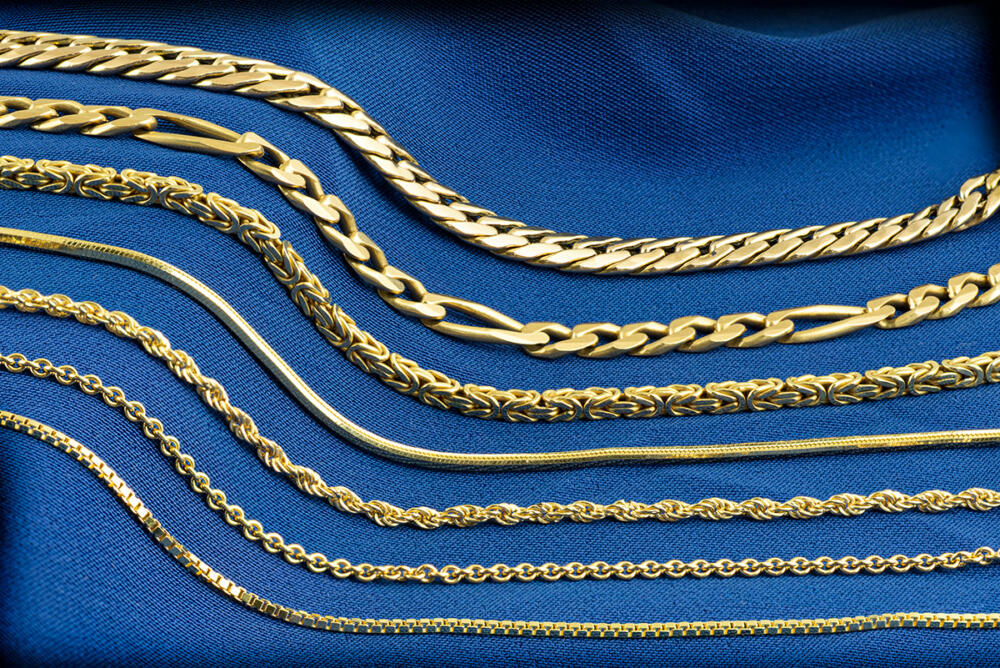
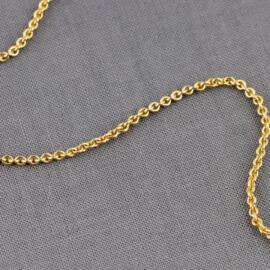
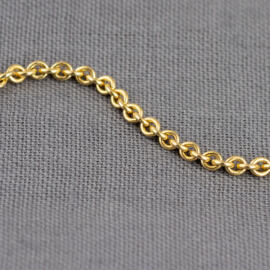
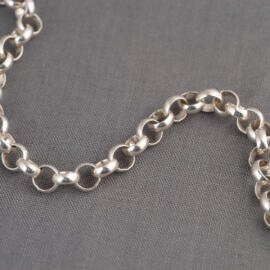
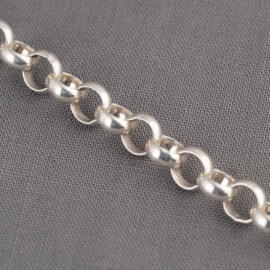
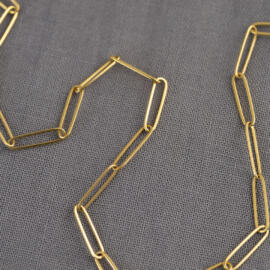
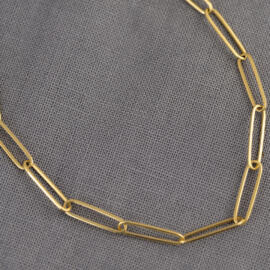
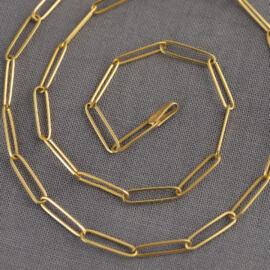
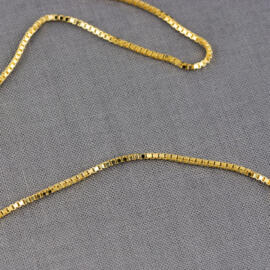
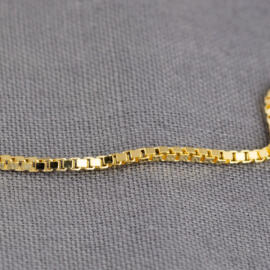
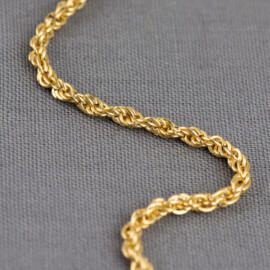
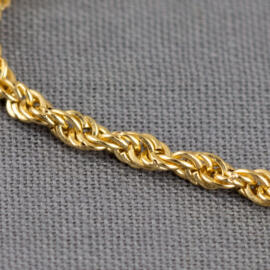
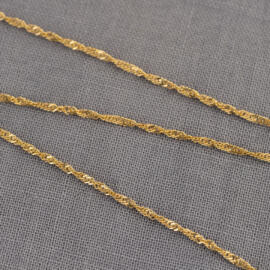
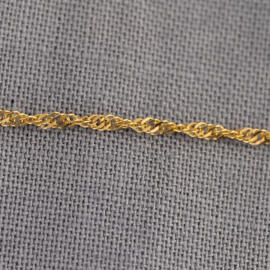
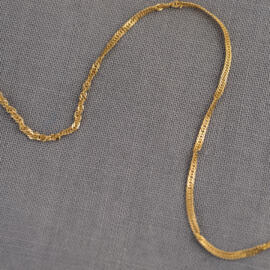
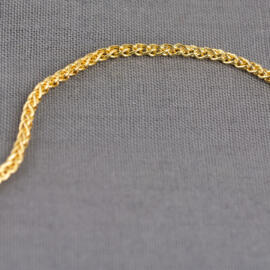
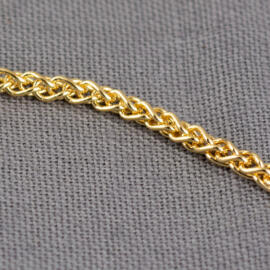
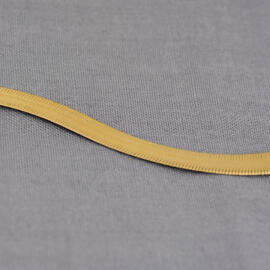
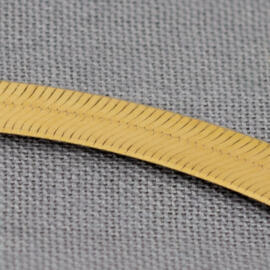
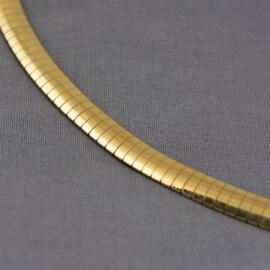
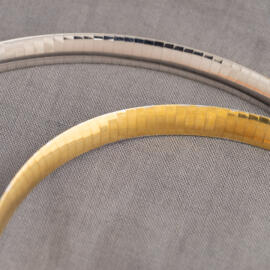
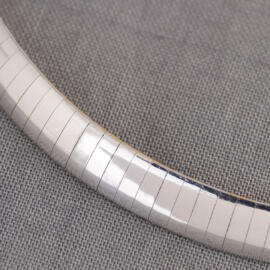
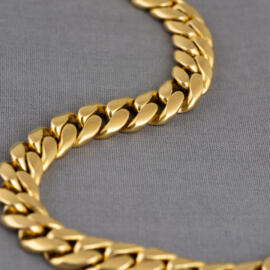
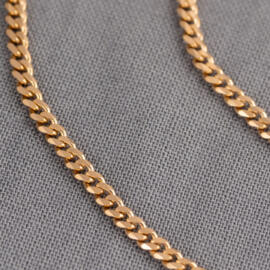
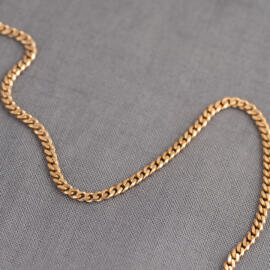
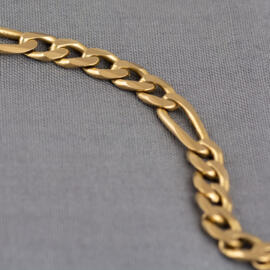
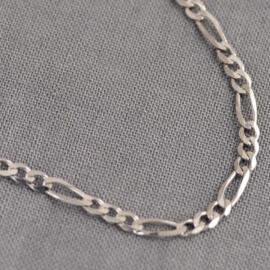
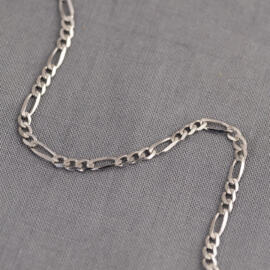
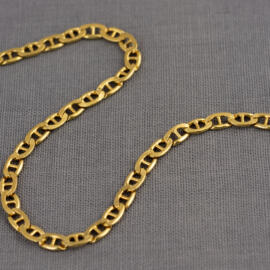
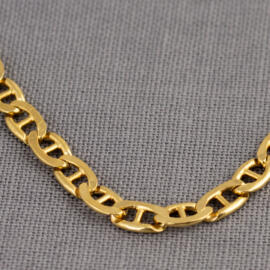
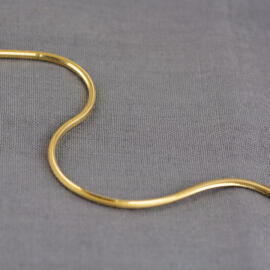
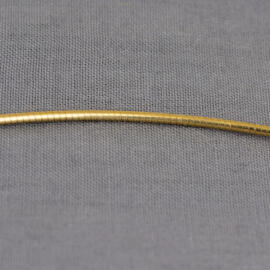
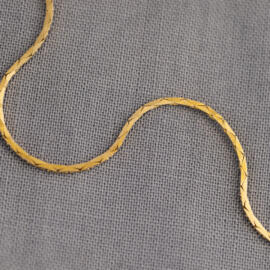
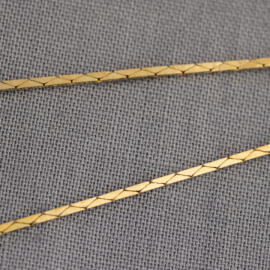
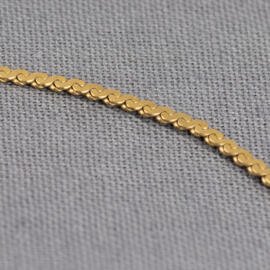
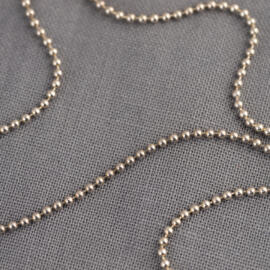
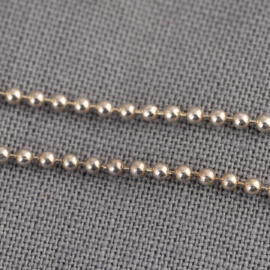
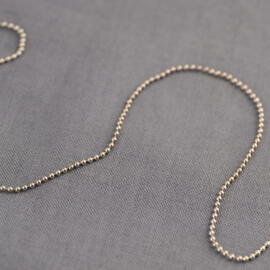
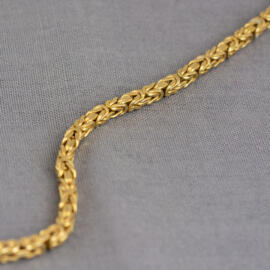
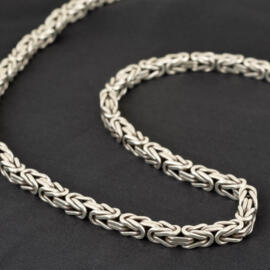
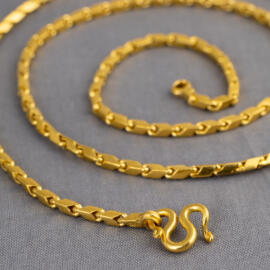
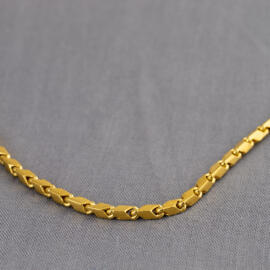
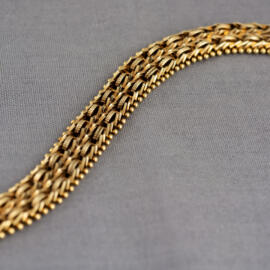
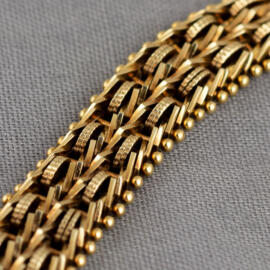
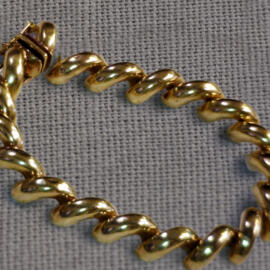
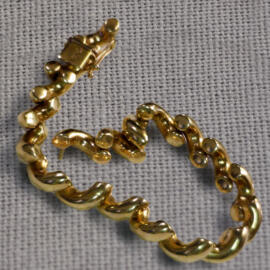
What an amazing article on chains….i never knew they were identified by these names……thank you so much..
You’re welcome, Kathryn! I’m so glad you enjoyed it. It really is amazing how many different kinds of chain are out there.